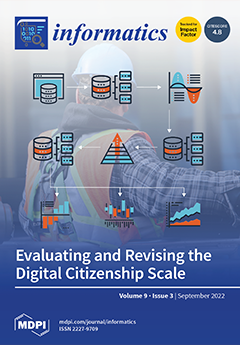This paper aims to assist novice gardeners in identifying plant diseases to circumvent misdiagnosing their plants and to increase general horticultural knowledge for better plant growth. In this paper, we develop a mobile plant care support system (“
AgroAId”), which incorporates computer
[...] Read more.
This paper aims to assist novice gardeners in identifying plant diseases to circumvent misdiagnosing their plants and to increase general horticultural knowledge for better plant growth. In this paper, we develop a mobile plant care support system (“
AgroAId”), which incorporates computer vision technology to classify a plant’s [
species–disease] combination from an input plant leaf image, recognizing 39 [
species-and-disease] classes. Our method comprises a comparative analysis to maximize our multi-label classification model’s performance and determine the effects of varying the convolutional neural network (
CNN) architectures, transfer learning approach, and hyperparameter optimizations. We tested four lightweight, mobile-optimized CNNs—
MobileNet,
MobileNetV2,
NasNetMobile, and
EfficientNetB0—and tested four transfer learning scenarios (percentage of frozen-vs.-retrained base layers): (1) freezing all convolutional layers; (2) freezing 80% of layers; (3) freezing 50% only; and (4) retraining all layers. A total of 32 model variations are built and assessed using standard metrics (accuracy, F1-score, confusion matrices). The most lightweight, high-accuracy model is concluded to be an
EfficientNetB0 model using a fully retrained base network with optimized hyperparameters, achieving 99% accuracy and demonstrating the efficacy of the proposed approach; it is integrated into our plant care support system in a
TensorFlow Lite format alongside the front-end mobile application and centralized cloud database. Finally, our system also uses the collective user classification data to generate spatiotemporal analytics about regional and seasonal disease trends, making these analytics accessible to all system users to increase awareness of global agricultural trends.
Full article





